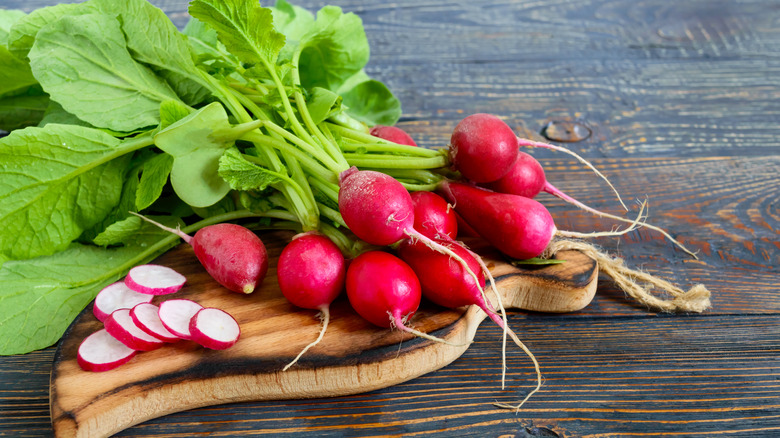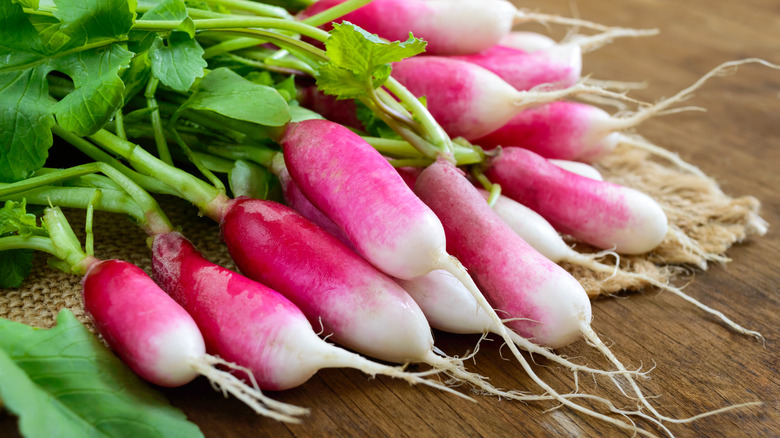What Makes French Breakfast Radishes Unique
Whether you love or hate radishes, you can't deny that they make a pretty addition to many dishes, plus they boast a ton of health benefits. Their bright color and peppery flavor add a big punch — both visually and to the palate — to any meal. They're also super versatile; you can roast them with butter and salt, add them to soups, serve them raw to dip with hummus, add them to a salad, pickle them, shave them thinly for a bright sandwich topping, and the list goes on and on.
There are a bunch of different types of radishes, but the most common one that we find in grocery stores and in our food are called cherry belle radishes (per My Recipes), but there are other varieties that can be found at the store, too. Among these are watermelon radishes, described as large, colorful pink and green radishes that add a stunning garnish or topping to salads, bowls, and other meals (per Krishi Jagran). Then there are daikon radishes, which are large white tubers that resemble carrots and are popular in Asian cuisines, as well as French breakfast radishes.
French breakfast radishes are milder
As the name suggests, French breakfast radishes are popular in France, as they grow easily in mild Mediterranean climates (per Specialty Produce). They have a similar coloring to Cherry Belle radishes (bright pink hues with a white tip) but are more oblong. These radishes also tend to be a bit milder in flavor than regular radishes, which makes them easier to eat raw (per My Recipes). You won't deal with the harsh peppery flavor that you can sometimes get with a normal radish, which opens up more ways to eat these delicious little vegetables raw without having to cook them first.
According to the New York Times, the French love to eat these breakfast radishes with sweet butter and salt, or alternatively on a baguette. We're pretty sure anything on a baguette will be pretty good, but adding a little crunch would be a great snack. They're usually available year-round in some grocery stores, so keep an eye out for them next time you're in the vegetable aisle!

